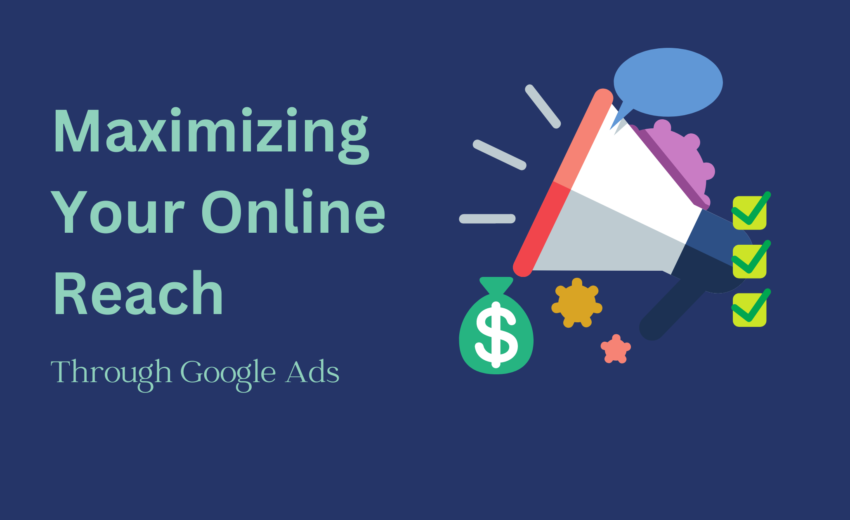
Google processes billions of queries per second, and the majority of search results pages contain Google ads. Businesses can effectively drive relevant, qualified traffic to their websites by purchasing Google Ads, which appear when people are searching for the goods or services that their company provides.
This article will explain what Google advertisements are, how they function, and why you should operate your own Google advertisements.
Have an existing account? Try out our Free Google Ads Grading Tool!
What is Google AdSense?
Google Ads is Google’s pay-per-click (PPC) platform, which enables businesses to increase their visibility across Google’s properties. Businesses also use Google Ads to operate display ads, shopping ads, YouTube ads, and more.
Google Search Ads:
Below is an example of an advertising-supported Google SERP. There are two sections of paid results: one above and one below the organic or unpaid results.
Google Display Ads:
As previously mentioned, you can also conduct display campaigns on the Google Display Network, a vast collection of third-party websites that have agreed to serve Google ads. Google Display advertisements can be in text, image, video, or rich media format and can be targeted in a variety of ways, including through audiences and remarketing.
Ads for Google Shopping:
Google Shopping advertisements are displayed on both the standard SERP and the shopping pane. These advertisements operate differently than standard search advertisements because keywords cannot be targeted. Instead, you maintain a comprehensive catalog of your products, and Google matches them to relevant searches. You can inform Google of the keywords for which you do not want your ads to appear.
YouTube advertisements:
Since Google owns YouTube, Google Ads is in charge of its advertising. You can construct videos, text, and display advertisements that appear during and before videos, as well as in other areas of the platform. Display targeting is comparable to YouTube ad targeting.
Why are Google advertisements displayed on the SERP?
Google Ads is centered on keywords, the terms that consumers are most likely to use when searching for a product. When advertisers establish a Google Ads search campaign, they create an ad for a specific offer and select a list of relevant keywords to target. When a user conducts a search on Google (also known as a query), Google checks to see if any advertisers are bidding on relevant keywords. If so, advertisements will appear on that SERP.
How does Google determine which advertisements to display? The Google Ads auction has begun.
Here, we explain in detail how the Google Ads auction works, but we’ll provide a condensed version. If, during a Google search, advertisers are bidding on keywords relevant to the query, Google will input all relevant keywords into the auction, one per account.
First, it will assign each keyword a Quality Score between 1 and 10 based on its relevance to the search query and other considerations. Then, it assigns each keyword an Ad Rank score by multiplying its Quality Score by the utmost bid of the corresponding advertiser. The advertisements with the highest Ad Rank scores are displayed.
To “win” Google Ads auctions and have your ad displayed for relevant keywords, you must optimize your Quality Score and bid amount. In conjunction with your bid amount, the higher your Quality Score, the higher your ad’s position. Among others, the following factors affect your Quality Score:
- The relationship between your Google ad and the search query
- The Google keyword’s relevance to your ad group
- The correspondence between your ad and the landing page
- The historical CTR of the advertisement and its ad group.
- Overall account performance historically
Having a high-quality score has additional overall advantages:
- Google rewards advertisers with high-quality scores by reducing their cost per click (CPC), which helps to improve ROI.
- Greater exposition: When you have a high-quality score, your ads will appear more frequently and in higher positions on the search engine results page (SERP) (top versus bottom). This allows you to receive additional visits and conversions without increasing your bids.
Refer to this infographic to gain a better understanding of how the Google Ads auction works.
Google Ad Expenses:
The cost of Google Ads depends on a variety of factors, such as the competitiveness of your keywords and industry, your geographic location, the quality of your advertising campaigns, and more.
The average cost per hit for Google search ads across all industries in the United States is $2.32. In many other countries, the average cost of Google Ads is significantly lower.
The Google Ads Performance Grader is a complimentary audit of your Google Ads account.
So there you go! Google Ads are described.
To maximize the effectiveness of your Google Ads ads and campaigns, you must determine which campaigns are effective for your business and where improvements can be made.
Google Ads Performance Grader is the most exhaustive free tool in its category. In less than one minute, the Google Ads Performance Grader executes a comprehensive audit of your Google Ads account, identifying areas where improvements can be made and highlighting successful areas of your account and how they compare to industry benchmarks.











